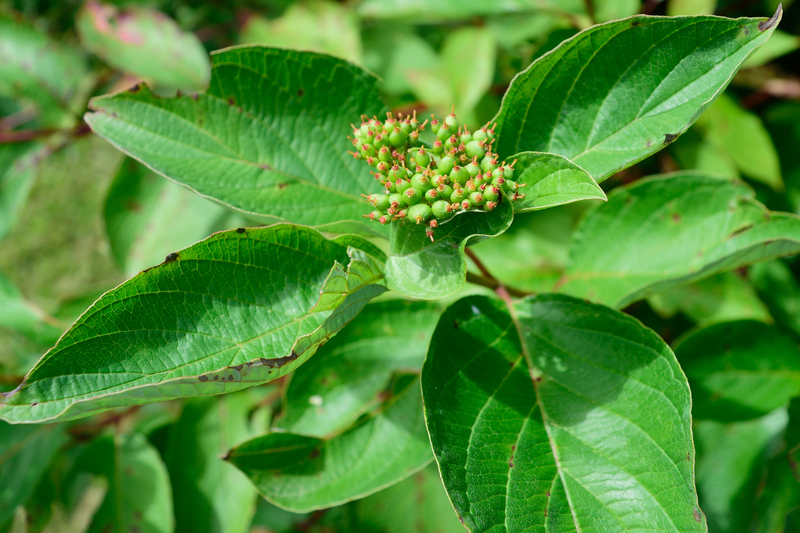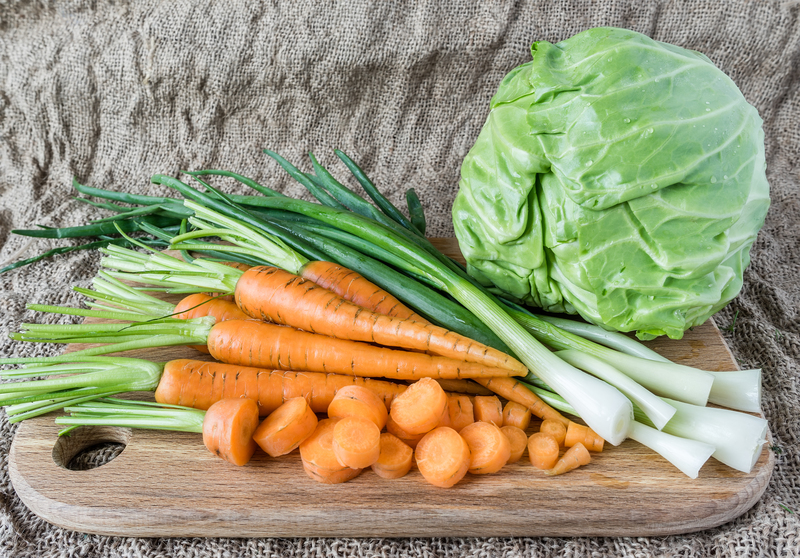Getting It Right: Gardens Designed for Dogs
Posted on 12/06/2025
Getting It Right: Gardens Designed for Dogs
Designing gardens for dogs is not just about keeping your pets safe; it's about crafting an outdoor sanctuary that harmonizes your love for gardening and your canine companions' joy for exploration. Whether you're a seasoned dog owner or planning for your first pup, a thoughtfully designed dog-friendly garden can enhance your outdoor experience while providing healthy, secure, and stimulating environments for your four-legged friends.
Why Design a Dog-Friendly Garden?
A garden tailored for dogs goes beyond traditional landscape aesthetics. It integrates the needs and instincts of dogs into the structural, functional, and botanical choices you make for your green space. Below are some compelling reasons to consider gardens designed for dogs:
- Safety: Eliminates toxic plants, secures perimeters, and minimizes injury risks.
- Health: Encourages exercise, mental stimulation, and reduces unwanted behaviors.
- Harmony: Balances the needs of both humans and pets, ensuring enjoyment for the whole family.
- Aesthetics: Achieves a beautiful, functional space without sacrificing design quality.
- Well-being: Promotes calm, content, and well-behaved dogs.

Key Elements of Dog-Friendly Garden Design
Crafting a pet-friendly outdoor space involves more than just adding a doghouse or water bowl. Here's what you need to consider when creating a garden perfect for dogs:
1. Safe and Secure Boundaries
- Fencing: Sturdy, escape-proof fencing is vital. Choose materials like wood, metal, or reinforced vinyl that withstand scratching and chewing.
- Height: Consider your dog's jumping ability; a fence of at least 1.8 meters (6 feet) for large or agile breeds is recommended.
- Gates: Install secure, self-closing latches. Double-gate systems (dog airlocks) can prevent bolt escapes.
- Hedges: Dense, non-toxic hedging offers a natural barrier, but secure any weak spots with solid fencing.
2. Dog-Safe Plants & Avoiding Toxic Species
Dogs love to sniff, nibble, and sometimes dig. Gardens designed for canines should avoid toxic plants such as:
- Azaleas & Rhododendrons
- Oleander
- Lilies
- Daffodils
- Yew
*Check the ASPCA plant database for a full list.* Instead, consider these pet-safe alternatives:
- Sunflowers
- Marigolds
- Fuchsias
- Rosemary
- Snapdragons
Top tip: Keep edibles like tomatoes and onions away from curious noses!
3. Durable, Dog-Proof Surfaces
Dogs run, dig, and sometimes get muddy! Surfaces in a dog-friendly garden must strike a balance between beauty, comfort, and practicality.
- Lawn: A robust turf variety like Bermuda, Buffalo, or Tall Fescue stands up to play.
- Mulch: Use pet-safe mulch (like cedar or pine), but avoid cocoa mulch, which is toxic to dogs.
- Paths: Decomposed granite, flagstone, or non-slip paving let paws travel comfortably and keep paws clean.
- Sand Pits or Dig Zones: Give dig-loving dogs their own area for fun (and keep flower beds intact).
4. Shelter and Shade
Pups need cool retreats from the sun. Well-planned dog gardens include:
- Trees & Shrubs: Plant mature trees for dappled shade, or use fast-growing non-toxic shrubs.
- Pergolas & Shade Sails: Provide stylish shelter for pets and people alike.
- Doghouse or Kennel: Position for comfort and optimal sightlines (dogs love to keep watch).
5. Water Access
Dogs must stay hydrated, especially during outdoor play in summer. In gardens designed for dogs, ensure:
- Accessible Water Bowls: Place bowls in shaded locations and refill regularly.
- Pond Safety: Fencing or grates prevent accidents. Small splash pools specifically for dogs can be refreshing!
- Drip Irrigation or Fountains: Recirculating fountains are safe to drink from and fun for playful pups.
6. Stimulation & Enrichment
Stimulating gardens for dog lovers provide both physical and mental challenges:
- Agility Features: Weave poles, tunnels, A-frames, and ramps boost fitness and confidence.
- Scent Trails: Plant aromatic herbs (like lavender and mint) or lay trails of treats to encourage sniffing.
- Interactive Toys: Rope toys, balls, and puzzles keep dogs entertained outdoors.
7. Avoiding Hazards
Safety is always paramount. Stay vigilant about:
- Pesticides & Fertilizers: Use only pet-safe, organic gardening supplies.
- Sharp Edges: Smooth out stones and garden ornaments to prevent cuts.
- Compost Heaps: Dogs love scraps, but compost can harbor dangerous molds and bacteria--secure compost bins firmly.
Design Ideas for Dog Gardens That Wow
A pet-friendly garden design can stand toe-to-toe with the best human landscapes--here's how to blend form and function:
Curvy, Wandering Paths
Dogs love to patrol their territory. Carve out circular or looping paths all around the yard perimeter, using soft materials. This encourages movement and gives anxious dogs a sense of control.
Doggy Windows and Observation Decks
- See-Through Fencing: Dogs are naturally curious! Create doggy windows in solid fences using polycarbonate panels or mesh, allowing them to observe street action safely.
- Platform Decks: Raised seating or decking provides lookout points for watchdogs--and sunbathing platforms for sleepy hounds.
Planting Schemes That Survive & Thrive
- Dense Planting: Cluster resilient, bushy species to buffer running paws and create lush visual interest.
- Stepping Stones: Strategically placed stones protect root zones and guide canine guests along preferred routes.
- Less is More: Limit delicate annuals and focus on tough perennials or native plants--these withstand doggy antics with less fuss.
Discreet "Doggy Toilet" Areas
- Gravel or Mulch: Select low-maintenance groundcover for a specific "dog bathroom" spot, making clean-up easier.
- Perfumed Shrubs: Lavender and rosemary can help mask odors around toileting areas.
*Train your dog to use this area with treats, encouragement, and consistency!*
Common Mistakes to Avoid When Designing Gardens for Dogs
Even well-intentioned owners can make errors that hamper the enjoyment or safety of their canine-focussed gardens. Avoid these pitfalls:
- Overlooking Toxic Plants: Always double-check species before planting.
- Ignoring Drainage: Good drainage prevents muddy hazards that can harm paws or ruin your lawn.
- Slick or Hot Surfaces: Avoid metal, artificial turf, or dark paving exposed to midday sun--they get dangerously hot for dog paws.
- Neglecting Shade: Sunstroke is a real risk! Prioritize cool, shaded areas in all parts of the garden.
- Underestimating Digging: Dogs dig naturally. Offer acceptable digging zones instead of vainly trying to stop the behavior entirely.
Small & Urban Dog Gardens: Big Benefits in Compact Spaces
Don't have an expansive yard? No problem! Dog gardens for small spaces can still be impressive:
- Balcony Pot Gardens: Use raised planters for safe, non-toxic greenery; add a patch of dog-friendly artificial turf for comfort.
- Vertical Gardens: Climbing plants or living walls maximize greenery in tight quarters.
- Puppy Playpens: Erect portable fences to create temporary play zones on patios or decks.
Maintenance Tips for Dog-Friendly Gardens
A successful garden for dogs should be easy to maintain--for you and your pets! Here's how:
- Regular Clean-Up: Scoop poop daily and hose down pee spots to reduce lawn burn and odors.
- Reseed Lawns: Patch bare or worn spots often to keep things looking lush.
- Trim and Prune: Avoid overgrowth that can harbor ticks or trip up frenetic pups.
- Routine Inspections: Check fencing, gates, and water features for safety issues or needed repairs.
Garden Ideas for Specific Dog Breeds and Behaviors
Each dog has unique needs according to breed, age, and temperament. Tailor your garden design for dogs by considering:
Active and Sporting Breeds (Labradors, Collies, Retrievers)
- Large, open lawns for running and playing fetch
- Durable turf and robust shrubs
- Agility zones with tunnels or hurdles
Scent Hounds (Beagles, Dachshunds, Basset Hounds)
- Herb gardens and sniffable plants
- Burrowing areas with sand or loose soil
- Mazes and trails for scent games
Toy Breeds and Seniors
- Soft, level pathways to avoid stumbles
- Low, gentle steps and ramps
- Ample shade and cozy shelter
Dog-Friendly Garden Features to Inspire You
- Paw-shaped stepping stones as quirky pathways
- Pup "drinking fountains"--stylish water features at dog height
- Mud-free zones with covered patios and washable mats
- Custom signs or "dog house" themed fun decor

Final Thoughts: Creating the Perfect Outdoor Haven for Your Dog
Getting it right with gardens designed for dogs means blending thoughtful planning, dog-safe features, durable plants, and creative touches to ensure both you and your canine companion can enjoy the outdoors in harmony.
Remember:
- Prioritize safety and comfort
- Pick dog-safe plants and avoid toxic species
- Include enrichment features for exercise and stimulation
- Choose durable materials and invest in good drainage
- Provide shelter, shade, and water for well-being year-round
By following these principles, your garden designed for dogs will deliver lasting happiness for every member of the family--human and canine alike.
Frequently Asked Questions About Dog-Friendly Gardens
What are the best dog-safe plants for my garden?
Go for non-toxic, hardy choices like lavender, marigold, sunflower, rosemary, and snapdragon. Always double-check the toxicity if you're unsure.
How can I stop my dog from digging up flower beds?
Give your dog an approved digging pit and reward them for using it. Use borders or raised beds to protect precious plants.
Is mulch safe for dogs?
Avoid cocoa mulch, which is toxic. Opt for shredded pine, cedar, or cypress, and oversee your dog's interactions as even safe mulch can cause digestive issues if eaten in large quantities.
How do I make a small outdoor area more dog-friendly?
Use vertical gardens, dog-safe pots, portable fencing, and a small area of pet-friendly turf. Shade and access to water are essential.
What surfaces are best for dogs in the garden?
Use tough turf, decomposed granite, flagstone, or pea gravel. Avoid sharp stones and slippery or overly hot surfaces.
For the ultimate in canine comfort and style, consider consulting with a landscape designer who specializes in dog-friendly gardens--and enjoy watching your pup thrive in the great outdoors.



